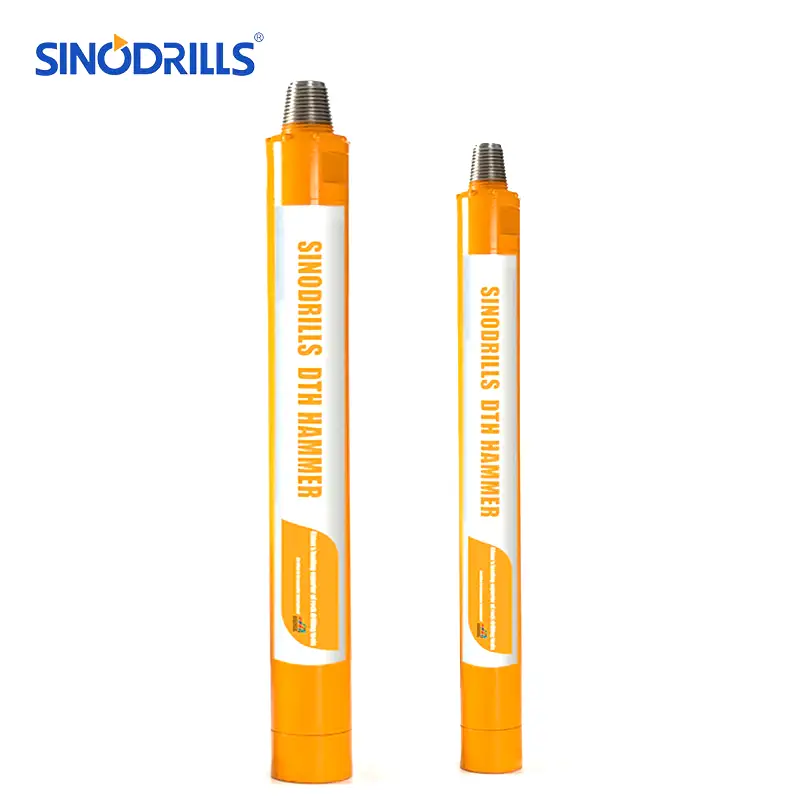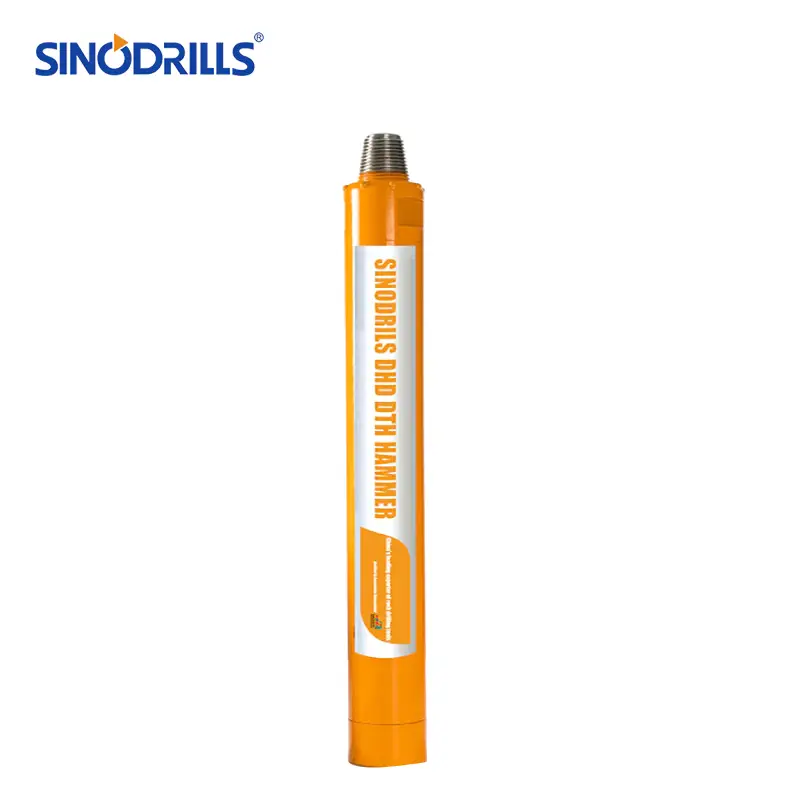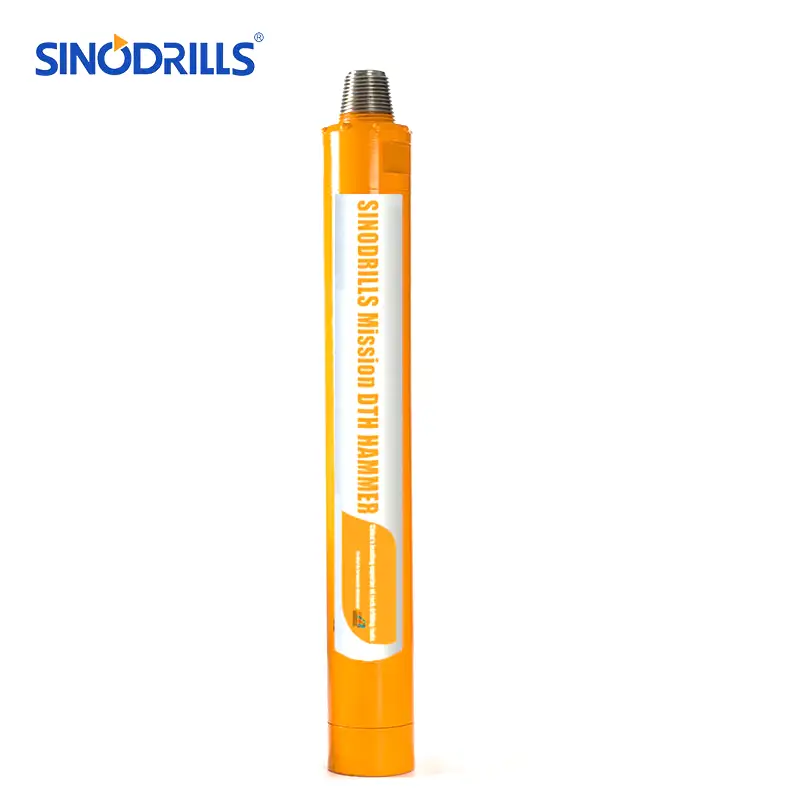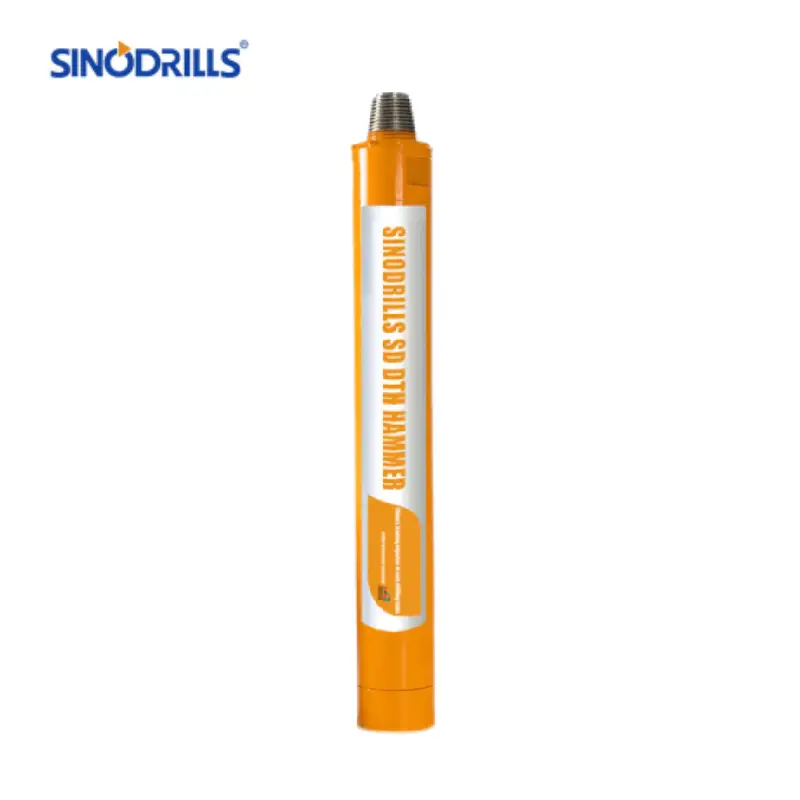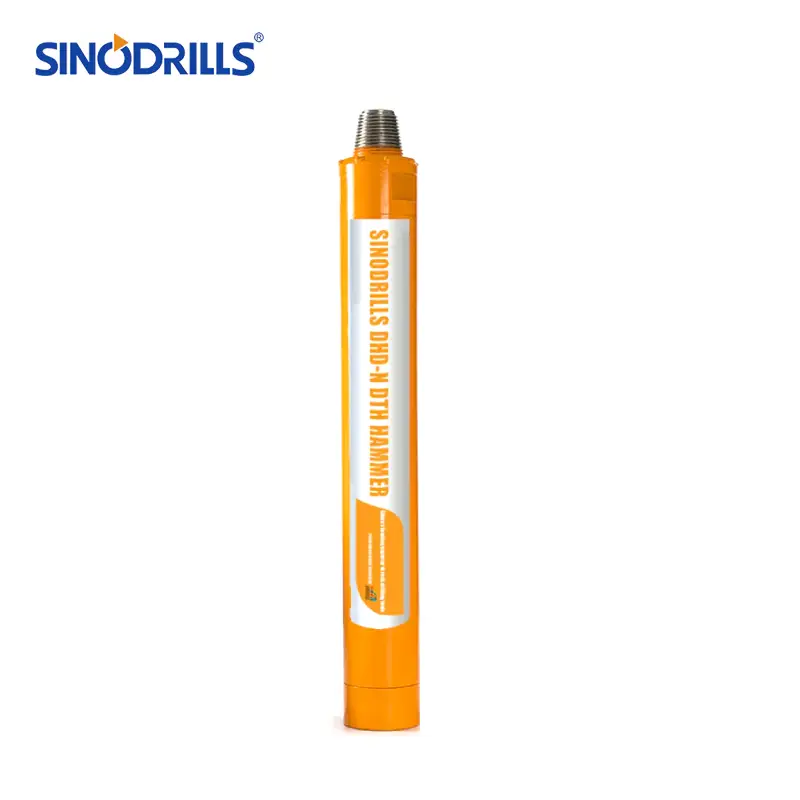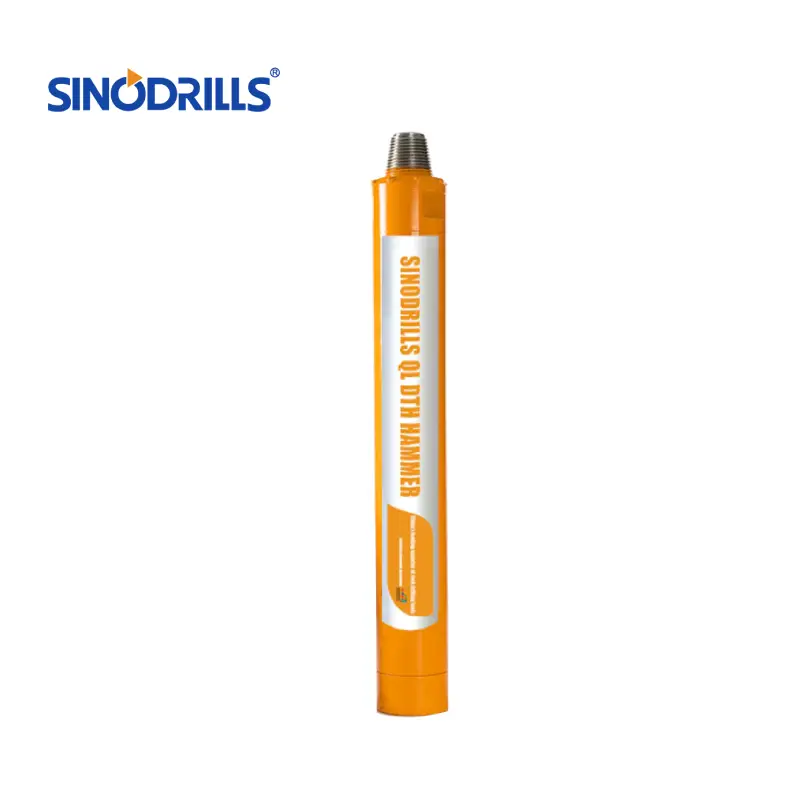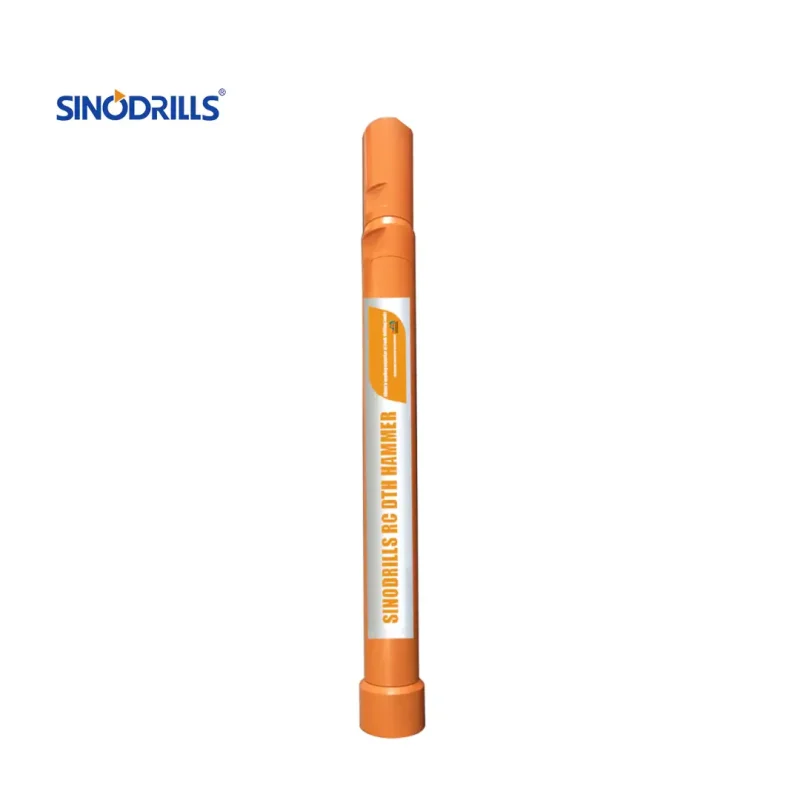Understanding how drilling equipment works is key to maximizing efficiency and project success. In the world of rock drilling, the Down-The-Hole (DTH) hammer is a powerhouse, renowned for its ability to penetrate tough rock formations with remarkable speed and precision.
This blog post will delve into the fascinating mechanics behind DTH hammer drills. We’ll explore the core components and the ingenious way they collaborate to deliver powerful impacts directly at the bottom of the borehole, breaking down rock and clearing cuttings simultaneously. Get ready to uncover the secrets of this indispensable drilling tool!
What is a DTH Hammer Drill?
A DTH (Down-The-Hole) hammer drill is a specialized drilling tool where the percussive mechanism, or “hammer,” is located directly at the bottom of the borehole, just behind the drill bit. Unlike top-hammer drills where the impact energy is generated at the surface and transmitted down a long drill string, the DTH hammer delivers rapid, powerful blows directly to the drill bit as it rotates.
This pneumatic (air-powered) tool uses compressed air, fed through the drill pipes, to drive an internal piston that strikes the bit, efficiently pulverizing hard rock into small cuttings that are then flushed out by the exhaust air. This method is highly effective for drilling in very hard and abrasive rock formations, offering high penetration rates and producing straighter, more accurate boreholes.
DTH Hammer Structure
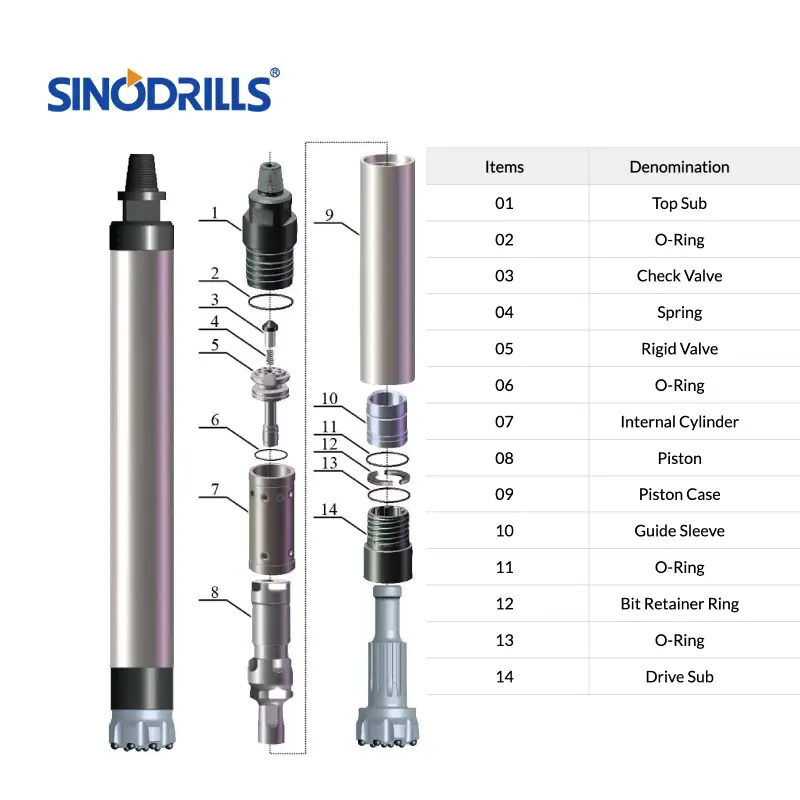
The provided image meticulously details the intricate structure of a DTH (Down-The-Hole) hammer, illustrating its various components that collectively enable efficient rock drilling.
This complex assembly transforms high-pressure compressed air into powerful percussive energy, transmitted to the drill bit for effective rock fragmentation.
- Top Sub (01): The uppermost threaded connection that links the DTH hammer to the drill string, ensuring secure attachment to the drilling rig.
- O-Ring (02, 06, 11, 13): Multiple O-rings are strategically placed throughout the hammer’s assembly to provide crucial seals, preventing air leakage and maintaining optimal operating pressure for efficiency.
- Check Valve (03): A vital component that prevents debris and water from entering the hammer’s internal mechanism from the drill string, safeguarding internal parts.
- Spring (04): Often works in conjunction with the check valve to ensure proper air flow control and sealing.
- Rigid Valve (05): Plays a role in regulating the air flow within the hammer, contributing to the consistent reciprocation of the piston.
- Internal Cylinder (07): Houses the piston and guides its movement, creating the chamber where compressed air acts to generate impact.
- Piston (08): The primary reciprocating component that directly strikes the drill bit, transferring the percussive energy to break the rock.
- Piston Case (09): The main outer casing of the hammer, providing structural integrity and enclosing all internal components.
- Guide Sleeve (10): Guides the piston’s movement within the internal cylinder, ensuring smooth and efficient operation.
- Bit Retainer Ring (12): A critical part that securely holds the DTH drill bit in place at the bottom of the hammer, preventing it from detaching during drilling.
- Drive Sub (14): This component, often integrated with the chuck, features splines or other engagement mechanisms that transfer both the impact energy and rotational torque to the DTH drill bit.
What is Water-Powered DTH Drilling?
Water-powered DTH (Down-The-Hole) drilling is an innovative method where high-pressure water, instead of compressed air, is used to power the DTH hammer. In this system, water is pumped down the drill string to the hammer, where it drives an internal piston to deliver percussive blows to the drill bit. The incompressibility of water allows for highly efficient energy transfer and enables very high impact frequencies.
After powering the hammer, the water then exits through the drill bit, simultaneously flushing rock cuttings to the surface and maintaining a clean borehole. This technology offers several environmental benefits, such as no oil contamination of the ground or air, dust suppression, and often less noise, making it ideal for sensitive drilling environments and specific geotechnical or water well applications.
How Does a DTH Hammer Drill Work?
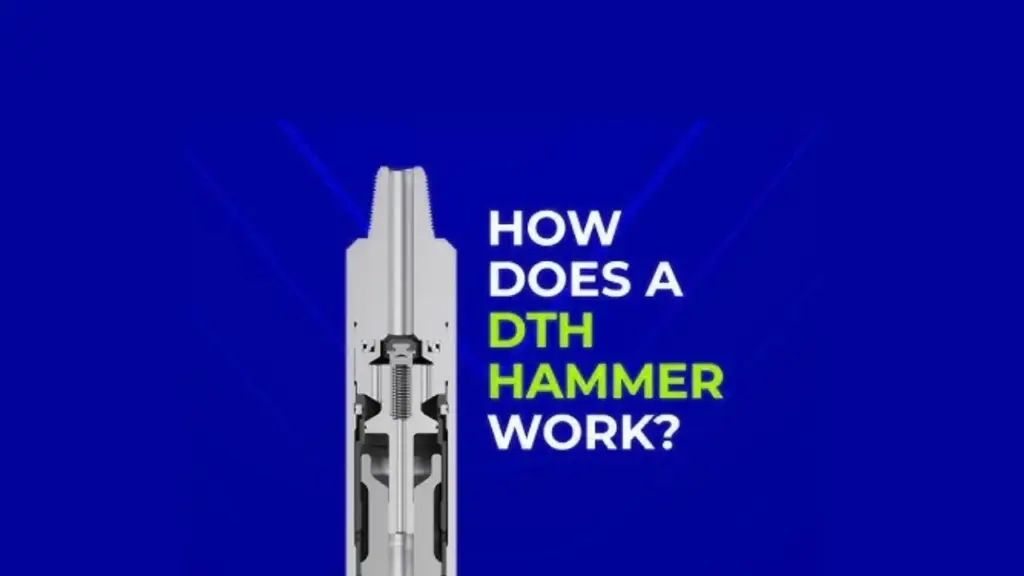
A DTH (Down-The-Hole) hammer drill operates on a powerful pneumatic principle, delivering percussive energy directly to the drill bit at the bottom of the borehole. The entire assembly, comprising the DTH hammer and its connected bit, is lowered into the hole via a string of drill pipes.
Compressed air, generated by a large air compressor at the surface, is the driving force. This high-pressure air travels down the hollow center of the drill pipes and enters the DTH hammer, where it powers a sophisticated internal mechanism to create rapid, powerful impacts.
Inside the DTH hammer, the compressed air acts upon a reciprocating piston. As air pressure builds, the piston is forced downwards, striking an anvil (or striking face) which is directly connected to the drill bit. This impact energy is efficiently transferred to the rock, causing it to fracture and break into small cuttings.
Simultaneously, exhaust air from the hammer is directed upwards, carrying these rock cuttings out of the borehole. The drill string, though primarily for air delivery and percussive power, also rotates slowly from the surface, which:
- Rotates the drill bit: This ensures that the bit’s cutting edges are presented to fresh rock with each blow, optimizing the breaking action and ensuring a circular hole.
- Aids in cuttings removal: The rotation helps to agitate the cuttings, allowing the exhaust air to carry them more effectively to the surface.
- Steers the drill: Minor adjustments in rotation can help maintain a straighter borehole.
The continuous cycle of air pressure, piston impact, and drill string rotation allows the DTH hammer drill to achieve exceptionally high penetration rates in hard and abrasive rock formations. The direct impact mechanism minimizes energy loss over depth, making it a highly efficient and accurate drilling method for a wide range of applications, from mining and quarrying to water well and geotechnical drilling.
DTH Hammer Working Principle

DTH (Down-The-Hole) hammers operate on a percussive principle, using compressed air to deliver powerful, rapid blows directly to the drill bit at the bottom of the borehole. This method ensures efficient energy transfer and optimal rock breakage. The process involves:
- Compressed Air Delivery: High-pressure compressed air travels down the drill string and enters the DTH hammer, powering its internal mechanism.
- Piston Action: Inside the hammer, the compressed air drives a reciprocating piston. As air pressure builds, the piston is forced downwards, striking an anvil (or striking face) directly connected to the drill bit.
- Impact on Drill Bit: This forceful impact is transferred to the drill bit, causing it to pulverize the rock at the bottom of the hole.
- Rotation and Flushing: Simultaneously, the drill string slowly rotates, ensuring that the drill bit’s cutting edges are presented to fresh rock with each blow. The exhaust air from the hammer then carries the crushed rock cuttings up the annular space between the drill pipe and the borehole wall, effectively cleaning the hole.
- Continuous Cycle: This cycle of impact, rotation, and flushing repeats continuously as long as compressed air is supplied, allowing for rapid and efficient drilling through hard rock formations.
Benefits of Using a DTH Hammer Drill
Recommended DTH Drill Hammers
Using a DTH (Down-The-Hole) hammer drill offers significant advantages over other drilling methods, particularly when working in hard and abrasive rock formations. The core benefit lies in its design, which delivers percussive energy directly to the drill bit at the bottom of the hole. This fundamental difference leads to a host of efficiencies and performance improvements that are crucial for demanding drilling projects.
The direct impact mechanism of the DTH hammer ensures that minimal energy is lost during transmission, resulting in highly effective rock breaking. This efficiency translates into tangible benefits for drilling operations:
- Superior Penetration Rates: The powerful, direct impacts from the DTH hammer lead to significantly faster drilling speeds, especially in very hard rock, reducing overall project time.
- Straighter and More Accurate Holes: Because the hammer is located directly behind the bit, it minimizes deviation and ensures that the borehole remains consistently straight and true, which is critical for applications like blast hole drilling or precise piling.
- Reduced Energy Loss with Depth: Unlike top-hammer systems where energy is transmitted down a long drill string, DTH drilling delivers power directly at the cutting face, maintaining high efficiency even at great depths.
- Effective Cuttings Removal: The exhausted compressed air from the hammer powerfully flushes rock cuttings and debris from the borehole, keeping the hole clean and preventing regrinding of material, which extends bit life.
- Versatility Across Rock Types: DTH hammer drills are exceptionally versatile, performing well in a wide range of geological conditions, from medium-hard to extremely hard and fractured ground, minimizing the need for equipment changes.
- Lower Overall Drilling Costs (in specific scenarios): While initial setup costs can vary, the increased efficiency, reduced wear on bits due to direct hammering, and faster project completion often lead to lower operational costs in the long run, particularly in hard rock.
- Reduced Vibration and Noise: Compared to some surface-percussive drilling methods, DTH drilling generally produces less surface vibration and noise, making it a more environmentally friendly option for sensitive areas.
How to Choose DTH Drill Hammers
Selecting the right DTH drill hammer is crucial for optimizing your drilling efficiency and achieving desired project outcomes. The performance of your entire drilling operation hinges significantly on matching the hammer to your specific application, rock conditions, and drilling rig capabilities.
Rock Formation Hardness
The hardness and abrasiveness of the rock formation are primary considerations. For extremely hard and abrasive rocks, a hammer designed for high impact energy and excellent wear resistance is essential. Conversely, for softer or fractured formations, a hammer optimized for faster penetration rates might be more suitable, even if it has a slightly lower impact force. Matching the hammer’s design to the rock type ensures both efficiency and prolonged hammer lifespan.
Hole Diameter Requirements
The required hole diameter directly dictates the size of the DTH hammer you need. Hammers are designed to fit specific bit sizes, and choosing the correct combination is critical for optimal performance and accurate hole dimensions. Using a hammer too small for the desired hole can lead to inefficient drilling, while one too large may not fit your rig or drilling program.
Air Pressure and Volume Availability
DTH hammers are pneumatic tools, meaning they rely entirely on compressed air for their operation. It’s imperative to match the hammer’s air consumption requirements (both pressure and volume) with the capabilities of your drilling rig’s air compressor. An undersized compressor will lead to a hammer that doesn’t perform at its full potential, resulting in slow penetration and wasted resources.
Thread Connection Type
The thread connection on the DTH hammer must be compatible with the drill pipe being used. Standard API (American Petroleum Institute) threads are common, but various proprietary thread types also exist. Ensuring a perfect match prevents air leaks, maintains structural integrity, and allows for efficient energy transfer from the drill pipe to the hammer, guaranteeing smooth and reliable drilling operations.
Conclusion
This blog has illuminated the core mechanics: the continuous supply of compressed air powering the piston, which repeatedly strikes the bit, while the drill string rotates slowly to grind and clear cuttings. This synchronized action is what enables DTH drilling to achieve such impressive results in diverse applications, from massive mining operations to precision water well drilling.
For all your DTH drilling needs, remember to source your equipment from a reliable partner. We offer a comprehensive range of wholesale DTH drilling tools, including premium DTH drill pipes, hammers, and bits.
Contact us to get wholesale DTH drilling tools that deliver exceptional performance and durability for your next project.

